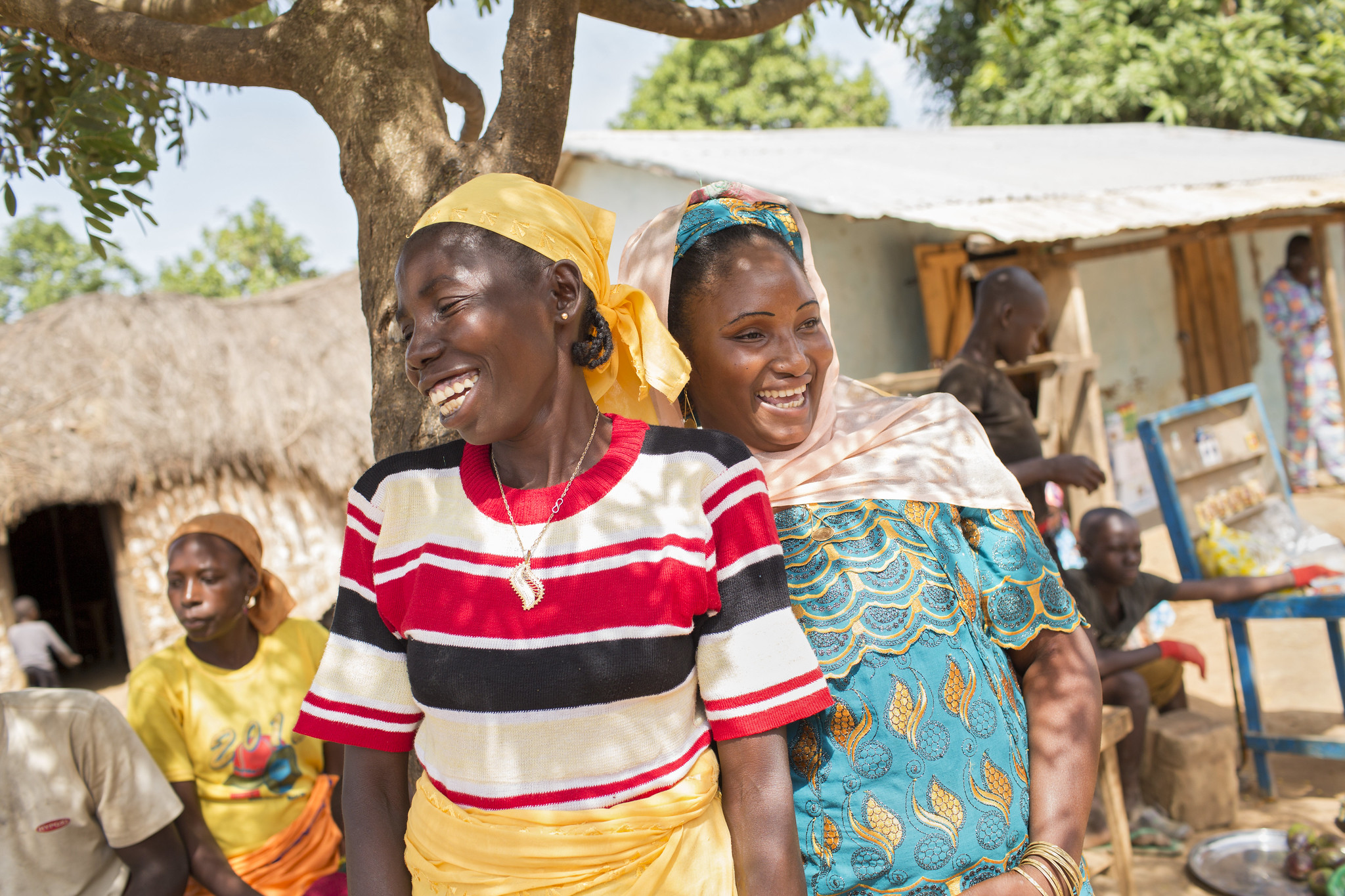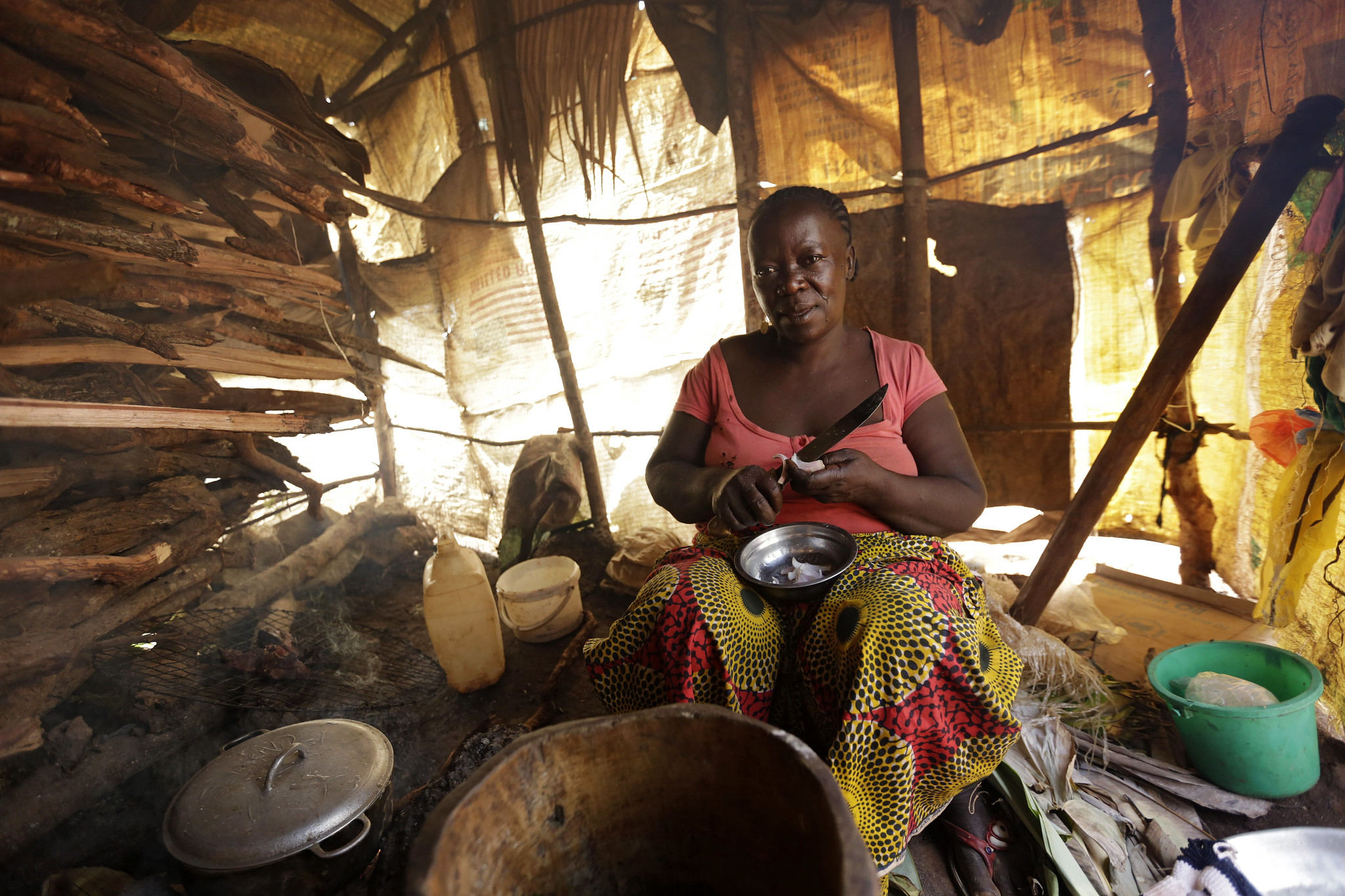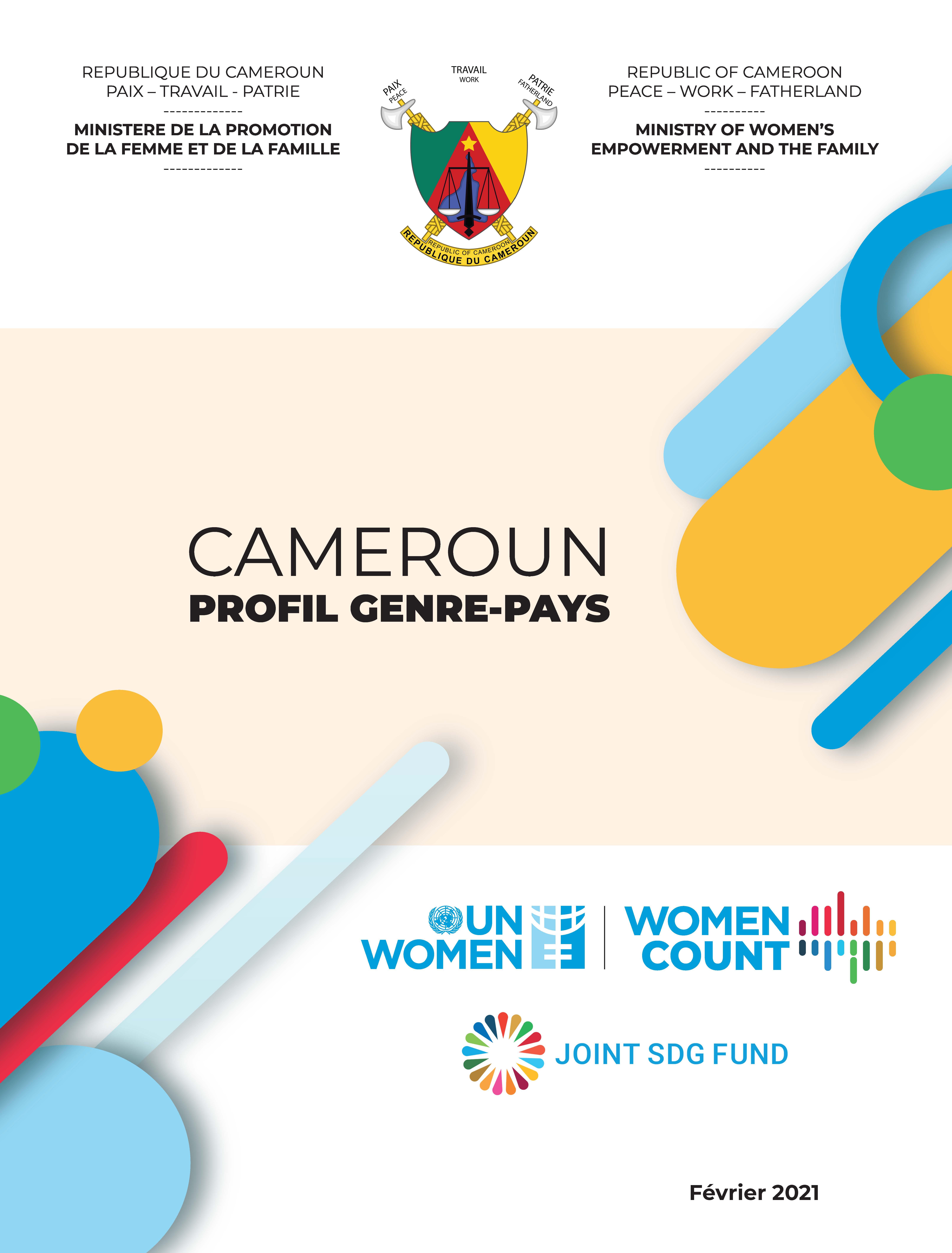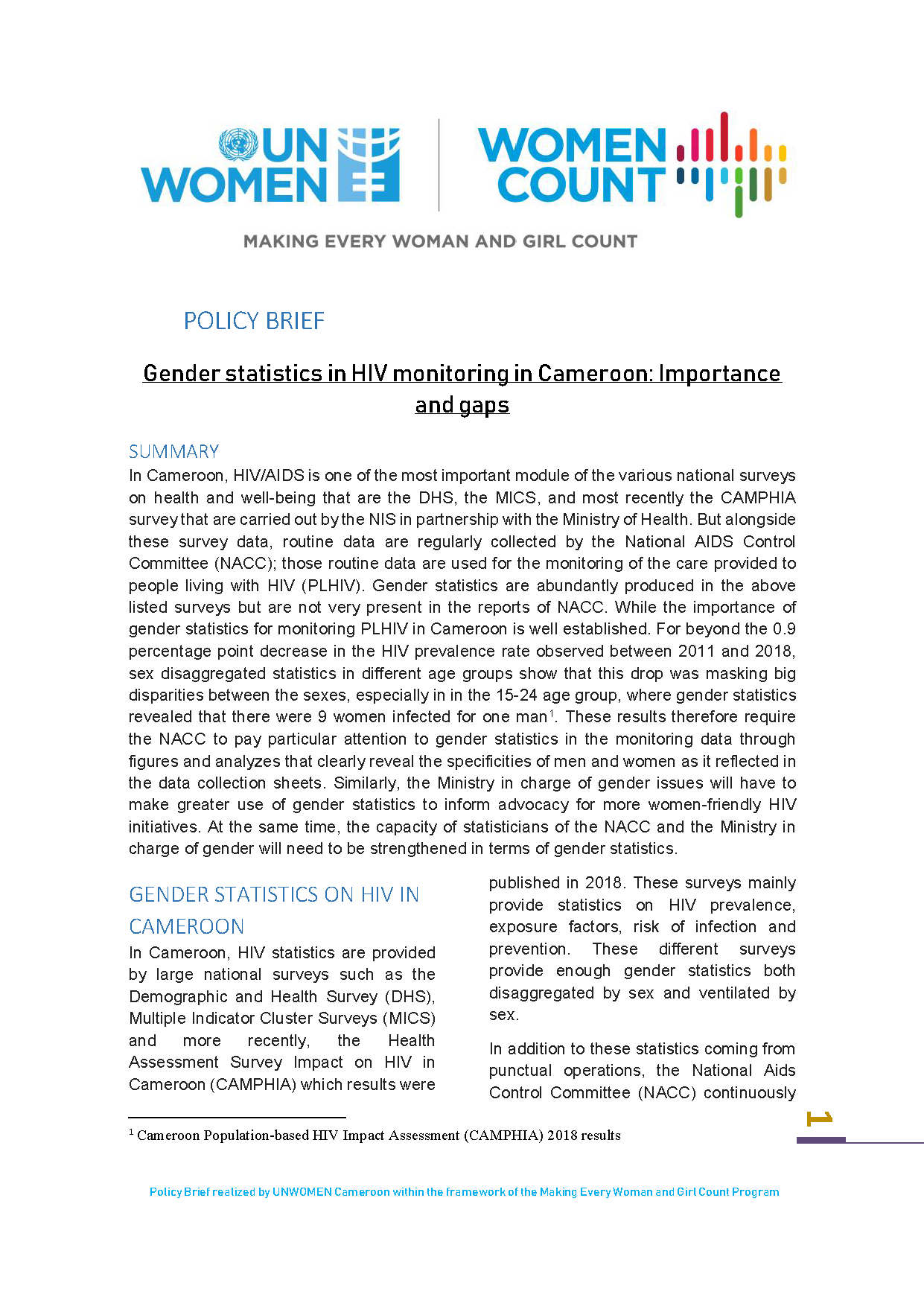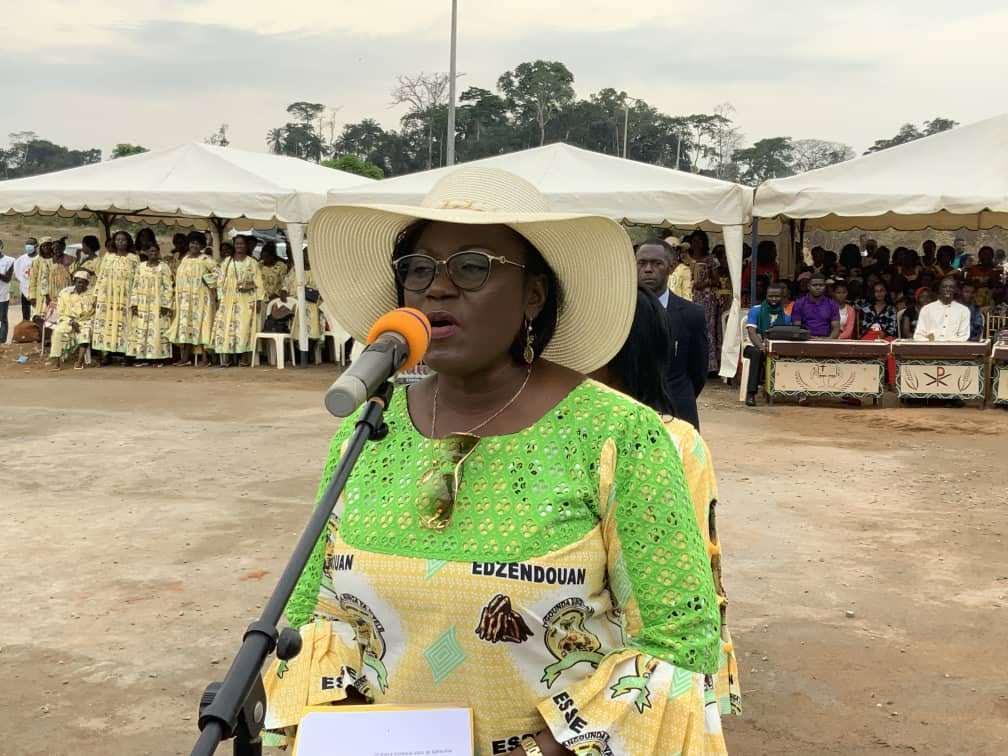
The challenges
Gender is not sufficiently integrated into Cameroon’s National Strategy for the Development of Statistics (NSDS). Within the National Statistical System (NSS), there are no specific laws or regulations governing the production of gender statistics, although general references have been made by many statistical regulations and legislations on gender. There is a weak framework to monitor gender mainstreaming in the production of gender statistics and none of the institutions in charge of statistics have a department or staff specifically dedicated to gender statistics.
The Women Count response includes
Supporting the NSS to conduct a gender-sensitive evaluation of the 2015-2020 NSDS and produce recommendations to strengthen it and future strategies;
Assisting the National Institute of Statistics (NIS) to formulate a framework for gender statistics in Cameroon, including adopting a Minimum Gender Indicator Set to be submitted to the National Council of Statistics for consideration and adoption;
Coordinating gender statistics across the NSS through the establishment of an Inter-agency Committee on Gender Statistics (IAC-GS), programme oversight, and management, quality assurance and technical support through a Women Count Project Steering Committee; and
Supporting the NIS to establish its own Gender Statistics Cell.

